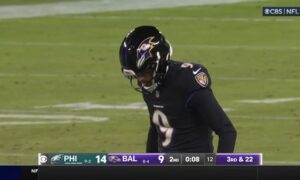It’s hard to have a conversation about the state of football in society without it eventually coming around to the topic of safety. It seems as though every year there is some new damning piece of information or media that comes out against the NFL regarding its ability—or even willingness—to protect its players from suffering severe cognitive impairment as a result of their performing their duties on the field.
This is why many observers are skeptical and reserved about the league’s recent flurry of rule changes that are designed in the name of ‘making the game safer’, since they view these actions as little more than a survival tactic, understanding that the change is necessary in order for the league to survive from outside pressure. Even if it means turning away the fans who crave the physicality.
Much of the discussion around concussions—and there were nearly 300 in the NFL last year—turns to the topic of chronic traumatic encephalopathy, or CTE, which is the neurodegenerative disease that is widely credited with leading to the sort of mood and personality changes and health issues that many retired football players suffer from.
A recent study that was published last year, for example, found that of the 111 samples of brains from NFL players studied, 110 of them were found to have had CTE at their time of death. The name of the player who did not have it was not disclosed because the player’s family requested it not be released.
The next frontier of CTE research, though, is on the horizon. And that is being able to detect it in living patients. One study that recently received approval is getting underway in Arizona in a partnership between Exosome Sciences and the Translational Genomics Research Institute. Their hope is to get samples (via blood, urine, or saliva) from some 200 or so current or retired football players, with an emphasis on those with experience in the NFL, to create a base of study, matched against a control group of people who have not been subjected to the sort of activities that are believed to be associated with the development of CTE.
“This is ground zero for the launch of this really important study”, said Solomon Wilcots, a former player and current member of a “players council” for Exosome Sciences. “If there was ever a time to have a call to action, this would be it. This is where the rubber meets the road. And there is a tremendous number of former NFL players in the Phoenix area”.
This is a topic that frequently gets brought up whenever I happen to write about concussions and CTE, so I imagine that quite a few people will be interested in the results of this study. I think it goes without saying that detection of CTE in living patients would be a watershed moment in the field, and a dire warning for the game of football.








